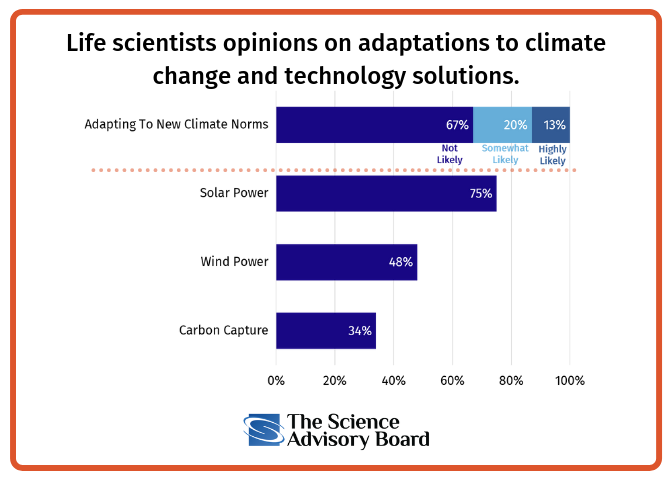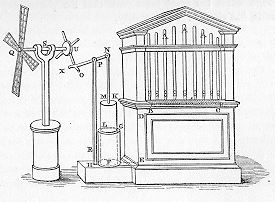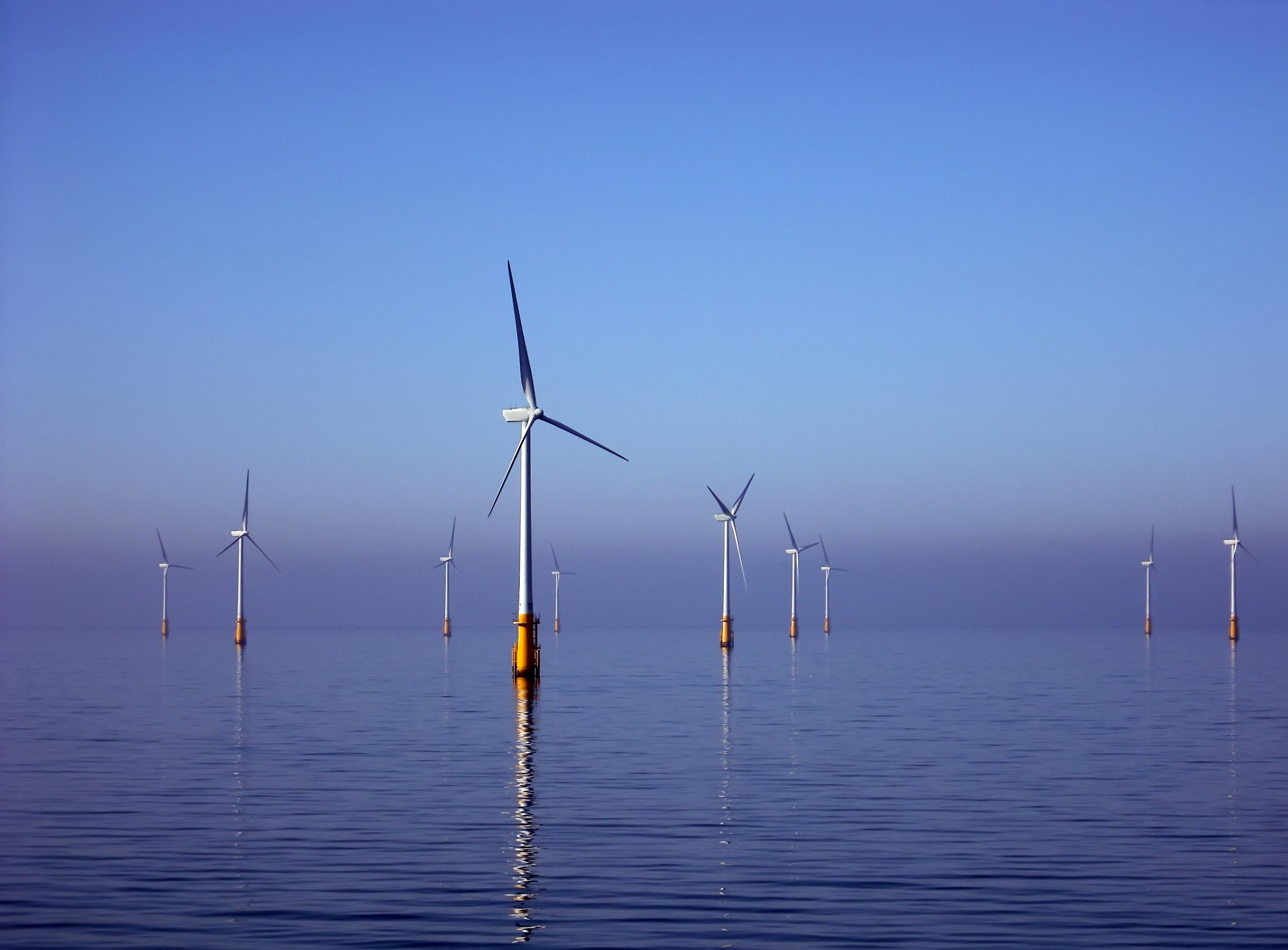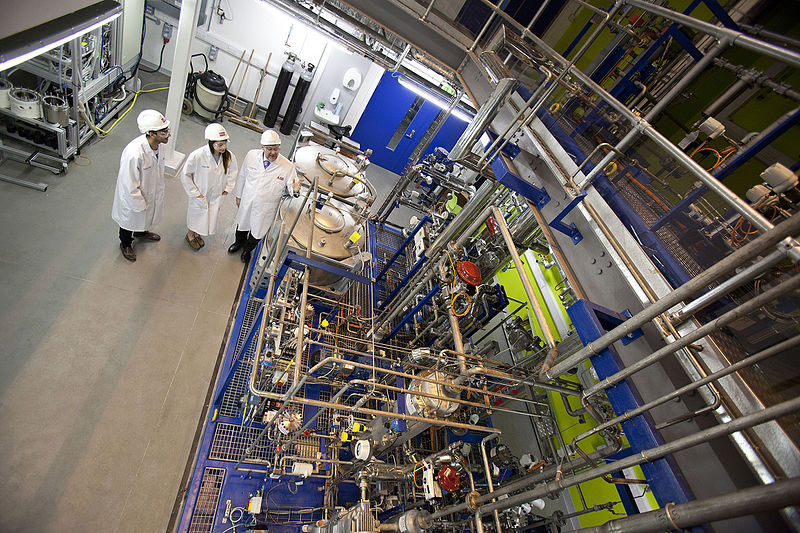
According to our Science Board study, two-thirds of life scientists believe that society will have difficulty adapting to new climate norms as a result of warming in the next 50 years. So what do they think can be done to overcome warming? Scientists think that technology will be important in tackling climate change, with 75% of life scientists believing that solar power will be the most effective technology. They also believe that a solution to climate change involves a combination of a viable tools and technologies. Other notable technologies include wind power and carbon capture & storage techniques. The technologies that scientists suggest may be effective tools are a mix of old and new.
Old Tech: Wind Energy
Humans have harnessed the power of wind energy for centuries. This began will building sail boats to move across oceans, and developed into grain mills used by the Persians in A.D. 500 - 900. Heron of Alexandria in Roman Egypt during the 1st century A.D. created the windwheel, the earliest known instance of using a wind-driven wheel to power a machine (an organ). The first examples of windmills appeared in the 7th century A.D. in the Middle East, where “Panemone windmills” were used to pump water and for gristmilling. These windmills were horizontal and consisted of vertical driveshafts with six to twelve rectangular sails covered in reed matting or cloth. Later, vertical windmills were adapted in Europe to grind flour beginning in the 1180’s. Wind turbines for electricity production were first developed in Scotland in July of 1887 by professor James Blyth of Anderson’s college. IThe 10 meter high, cloth-sailed wind turbine was installed in the garden of his holiday cottage and was used to charge accumulators (energy storage device) developed by the Frenchman Camille Alphonse Faure, to power the lighting in the cottage. In the 20th century wind power was primarily used in isolated locations, such as on farms or remote locations. Multi-megawatt wind turbines developed in the late 1970’s allowed the technology to be scaled up and provide commercial power. Now, in the 21st century, high-capacity wind turbines are a significant contributor to the energy grid mix particularly for offshore production. In 2018 nearly 6% of worldwide energy production came from wind turbines (2).
Transitional Tech: Solar Power
Solar power, which is the overwhelming technology preferred by scientists to combat climate change, has ancient origins but has only recently been revolutionized in the 20th century. As early as the 7th century B.C., humans were using the sun to light fires or to heat sunrooms in ancient Roman bathhouses (3). Solar technologies really began to develop in the 19th century when Carles Fritts installed the first rooftop photovoltaic solar array using 1% efficient selenium cells in 1884. Photovoltaics (PV) convert light into electricity using semiconducting materials. The system uses solar modules composed of solar cells to generate electrical power. Further development of solar technologies stalled in the 20th century until the 1979 energy crisis whereby deployment strategies for solar technology and incentive programs renewed attention to renewable energy sources. Development of residential and commercial solar panels and photovoltaic power stations in the early 2000’s and feed-in tariffs led to high investment in solar technology and development of panels in the US and Europe. Efficiency is one major drawback of solar PV. Most current solar cells have an efficiency of around 12 to 20%, with the most efficient cell type having an efficiency of 46% (4). One way to increase efficiency is to change the makeup of solar cells. Changing the material from crystalline silicon to perovskite may lead to increased efficiency and decreased costs (5). Currently, solar energy is a global component of renewable energy generation. Regionally, Asia was the fastest growing region as of 2018 with almost 75% of all global installations. Despite the popularity of solar power as a renewable energy source, as of 2017 only 2.5% of worldwide energy production came from solar power (6).
New Tech: Carbon Capture
Applications for carbon capture and storage (CCS) technology has the potential to significantly reduce carbon emissions when applied to large scale operations from major carbon emitters, such as coal power plants. The concept is simple: capture carbon that would be released into the atmosphere, compress it and inject it into safe and secure underground formations for permanent storage. However this technology is complex requiring the separation of carbon from other gases and compression of liquid carbon dioxide. Moreover, locations for permanent storage are limited with most being in undersea gas wells or deep saline formations (7). The major drawback of this technology is that it cannot be used as a renewable source of energy to replace petrol or other electricity sources. As the world is moving away from gas and coal electricity production, there are also questions about the validity of implementing this technology commercially. There is a new linked idea of carbon capture and utilization (CCU) that would eliminate the need to store carbon and would instead be converted to valuable fuels. This process requires hydrogen and can be a relatively expensive process but in the end can be roughly carbon neutral (8). So while this technology may not currently be a forerunner in reducing carbon emissions, according to many scientists, it does have potential for the future.
Tech Usage
Scientists, venture capitalists, and governments have spent an enormous amount of time and funds into the development of all of the previous listed technologies. But how are they actually being utilized on the energy grid? In the U.S., for example, only 11% of energy consumption was from renewable sources (primarily hydroelectric, followed by biomass, wind, solar) in 2017 (9). Scientists see the potential for increased use of a variety of technologies particularly solar and wind. Alternatively, in the EU over 25% of energy generation in 2016 was renewable with a similar trend in usage with hydroelectric first followed by wind and solar (10). In Southeast Asia, bioenergy and geothermal energy are major contributors to the energy capacity, however solar and wind power still account for only a small share of the energy grid mix as of 2016. India in particular has experienced growth between 2015-2017 in solar capacity (11). China remains the largest solar generator in the region, despite government defunding in the solar sector beginning in May 2018. While China has the largest solar capacity, they are also the largest consumers of coal energy, which directly opposes targets pledged in international agreements.
As a civilization, we certainly have the tools to tackle climate change and to adapt to whatever changes come our way. Moreover, global action on climate change has brought us together with a common goal. As scientists, we have the power to change the dialogue surrounding this global issue. The challenges you address lead to impactful improvements that benefit society and help to preserve our natural resources. We commend all of your contributions and encourage you to continue your meaningful work!
Click to read the full report below:
Click to read the full presentation below:
If this article was interesting to you, check out the first article in this series: "Climate Change: Interactions of Global, National, and Local Action"
Copyright © 2019 scienceboard.net




.jpg)





